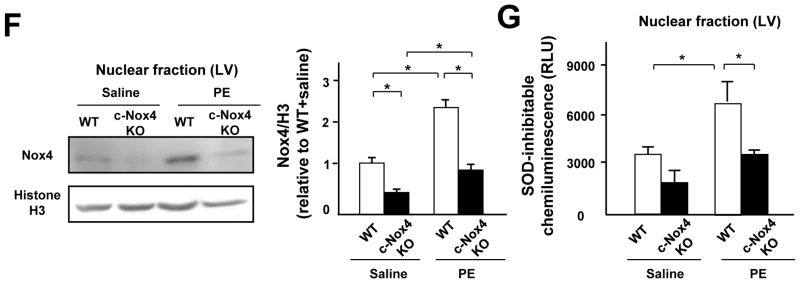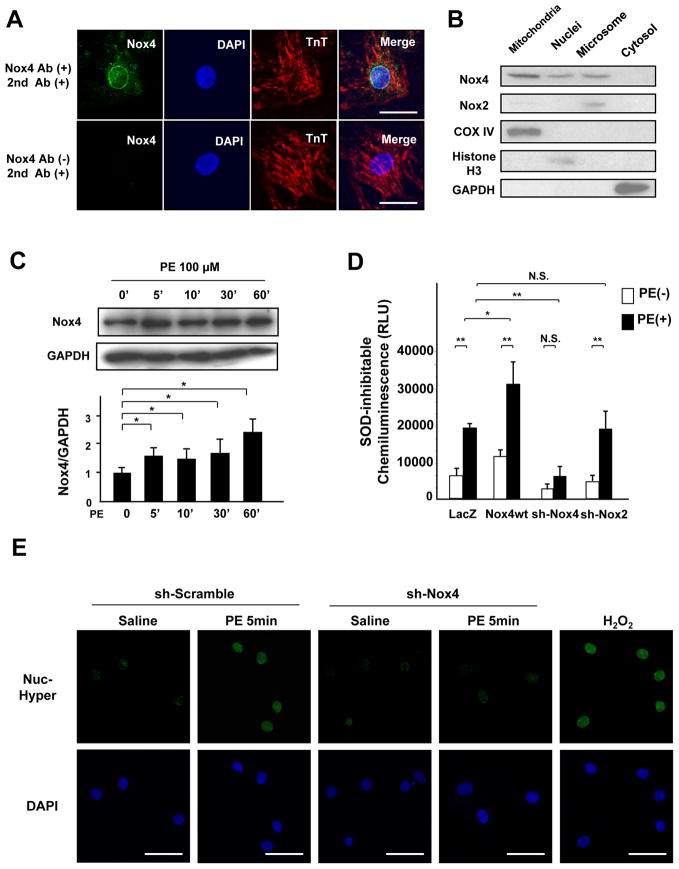Figure 4. Endogenous Nox4 mediates PE-stimulated nuclear ROS production.

A. Cultured myocytes were co-stained with rabbit anti-Troponin T antibody and mouse anti-NOX4 antibody, followed by anti-rabbit AlexaFluor-568 conjugated secondary antibody and anti-mouse AlexaFluor-488 conjugated secondary antibody (upper panel), or with anti-Troponin T and secondary antibodies alone (lower panel). Nuclei were stained with DAPI. Merged images are also shown. Bar=10 μm. B. Cytosolic, mitochondrial, microsomal, and nuclear fractions were prepared from cultured myocytes. Immunoblot analyses were conducted with anti-Nox4 antibody and anti-Nox2 antibody. The purity of the mitochondrial fraction was confirmed by the absence of histone H3 or GAPDH staining. The purity of the nuclear fraction was confirmed by the absence of COX IV and GAPDH. C. Expression level of Nox4 in the nucleus in cardiomyocytes after PE stimulation. Protein expression of Nox4 and GAPDH was determined by immunoblotting. The results of the quantitative analysis of Nox4 expression are also shown (n=4). D. Nuclear fractions were prepared from myocytes transduced with the indicated adenoviruses. NADPH-dependent O2− release was measured by the lucigenin method. The SOD-inhibitable component of O2− release from the nuclear fraction was determined (n=6). E. Myocytes were transduced with Ad-Hyper-nuc and Ad-LacZ or Ad-shNox4 in the presence or absence of PE for 5 minutes. Hyper-nuc is an indicator of hydrogen peroxide localized in the nucleus. Green staining indicates H2O2 production (n=8). Nuclei were stained with DAPI. Bar=20 μm. F and G. Nuclear fractions were prepared from WT or c-Nox4 KO mouse hearts. F. Expression levels of Nox4 and histone H3 in the nuclear fraction from WT or c-Nox4 KO mouse hearts. G. NADPH-dependent and SOD-inhibitable O2− release was measured by the lucigenin method (n=4). *P<0.05, **P<0.01. N.S.: not significant.

